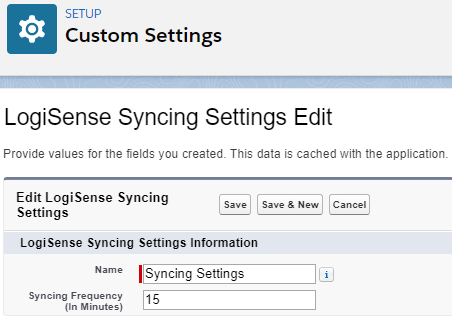Importing and Syncing Data
There are two buttons on the LogiSense Integration tab which allow you to import data into Salesforce from LogiSense:
Import Catalogues
Clicking on this button will import the following objects from LogiSense:
Packages (includes all package frequencies, package currencies, pricing rules, and rate plan connections to each package service)
Services (includes any connected usage buckets)
Rate Plans (includes groups and rates)
Share Plans (includes all data surrounding participating levels (package or service) as well as participating and contributing amounts)
Import Data
Clicking on this button will import the following objects from LogiSense:
Account Status Types
Account Types
Contact Types and Points
Countries and States
Owners and their Currencies
Bill Groups
AR Terms
Background Data Sync
To enable background syncing navigate to the LogiSense Integration tab and click on the Start Data Sync button.
Once Accounts and Contacts have been synced between both systems, changes to either of these objects within Salesforce will automatically create a LogiSense Request Record in order to update the record in LogiSense. These records will show on the LogiSense Requests tab with a status of Waiting and will be picked up by the Scheduler for resyncing.
For accounts changing of the following fields will trigger an automatic resync:
Name
Type
Status
Bill Group
AR term
Parent account
Usage or Subscription invoice recipients
Any custom fields that were mapped between both systems
Contact update changes to mapped contact fields/when a new contact is added or deleted
Background Data Sync Frequency
By default the scheduler in the LogiSense app is set to a 15 minute interval. In order to change this within Salesforce:
Go to Setup
Enter Custom Settings
Click on Manage for LogiSense Syncing Settings
Click Edit next to Syncing Settings
Enter a new value in the Syncing Frequency (in Minutes) field
Remember that this only works from Salesforce to LogiSense, meaning that if any changes are made to Accounts or Contacts within LogiSense are not pushed to Salesforce. Therefore it is recommended that the Salesforce instance be the master for any Account/Contact updates or hierarchical structure.

